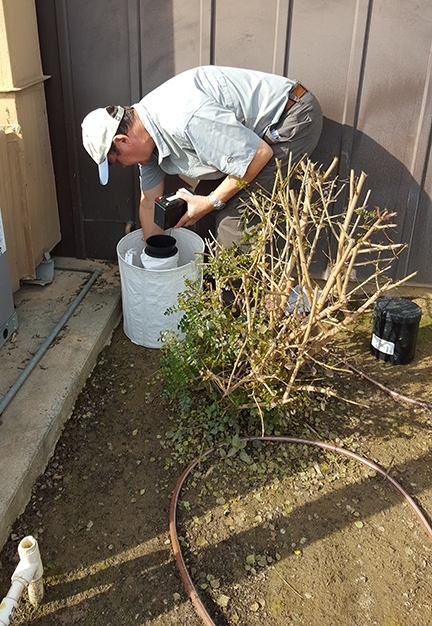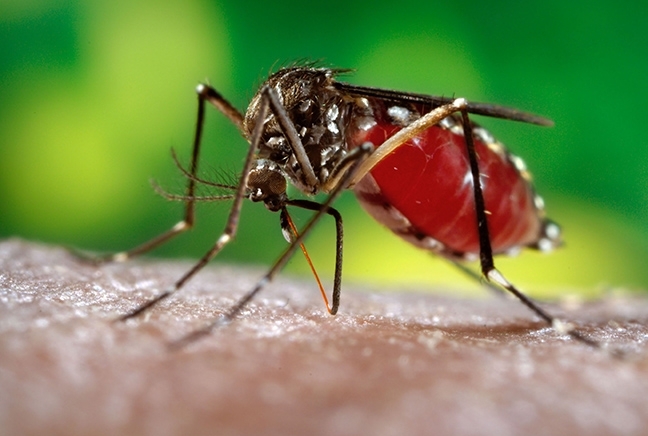
The species has spread to at least seven counties in California since June 2013, says UC Davis medical entomologist Anthony Cornel of the UC Kearney Agricultural Research and Extension Center, Parlier, and the UC Davis Department of Entomology.
“It's an issue of great concern, especially as current control methods do not appear to be working well," says Cornel, who collaborates on research projects in Clovis, Fresno County, with the Consolidated Mosquito Abatement District. The district, based in Fresno, covers 1,058 square miles, including part of Kings County.
“We can't predict how far this mosquito will go in California,” he says, but it has spread “south of Fresno to San Diego. The furtherest site north is Madera in the Central Valley, but it's also been found in the more coastal area of Menlo Park in San Mateo.”
As far north as Sacramento?
“I don't want to exclude the possibility that it may spread as far north as Sacramento,” said Cornel, who collects, rears and researches mosquitoes from all over the world, including the United States, Mali, Cameroon, Comoros, Tanzania, South Africa and Brazil. “We need to see if it overwinters as eggs or adults or both.”
Infected Aedes aegypti can transmit dengue, yellow fever, Zika and chikungunya viruses. The Zika virus was first identified in Uganda in 1947 in rhesus monkeys, according to the World Health Organization. It was subsequently identified in humans in 1952 in Uganda and the United Republic of Tanzania. Outbreaks of Zika virus disease have been recorded in Africa, the Americas, Asia and the Pacific.
Although the mosquito species is in California, it's important to point out that there are no reported cases of locally transmitted Zika virus in the state or in contiguous United States, according to the Centers for Disease Control and Prevention. The cases have all involved travelers returning home from countries plagued with disease outbreaks.
Cornel and his colleagues published a 27-slide document, “Surveillance and Control of Aedes aegypti Mosquito in Clovis, Calif.,” on Feb. 8 in F1000 Research, http://f1000research.com/slides/5-149. They called attention to the widespread invasion and establishment of the species in California. The research, illustrated with maps, is the work of Cornel and Yoosook Lee of UC Davis; Stephen Dobson of the University of Kentucky; Corey Bansfield of MosqMate Inc. and Jodi Holeman, Mark Amireno, Charles Smith and Stephen Mulligan III of the Consolidated Mosquito Control District.
The California team collaborates with University of Kentucky scientists to develop novel control strategies. One trial involves coating male mosquitoes with insect growth regulators, which are passed on to the females. Males are also infested with a biopesticide or “a good bacteria-like organism,” Wolbachia. “The male transfers it to the female, which affects the ovaries and negatively affects immature development,” Cornel explains. “It's not new, but it's not been employed in large trials.”
The researchers target mosquito breeding sites, primarily yard drains. “Despite the drought and the elimination of visible bodies of water, such as bird baths, pet bowls and flower pots, there's a major issue: yard drains,” Cornel says. “Yard drains installed in new home developments empty into the gutter or street and are cryptic breeding sites for mosquitoes.” He speculates that these mosquitoes are breeding underground.
“These drains are not easily accessible and we can't see the mosquitoes,” Cornel points out. “We need to blow out the water and plug these yard drains to eliminate these breeding sites.” He suggests that cities everywhere address this public safety issue and “redesign the yard drains.”
It's crucial for the public to become involved, Cornel emphasizes. “We have to focus on public education. We have to get the message across to eliminate mosquito breeding sites. We can't go to every house. We must rely on the public to eliminate the breeding sites.”
It's possible—but he hopes not—that what is now a “mosquito nuisance” will result in a disease outbreak.
Attached Images:
